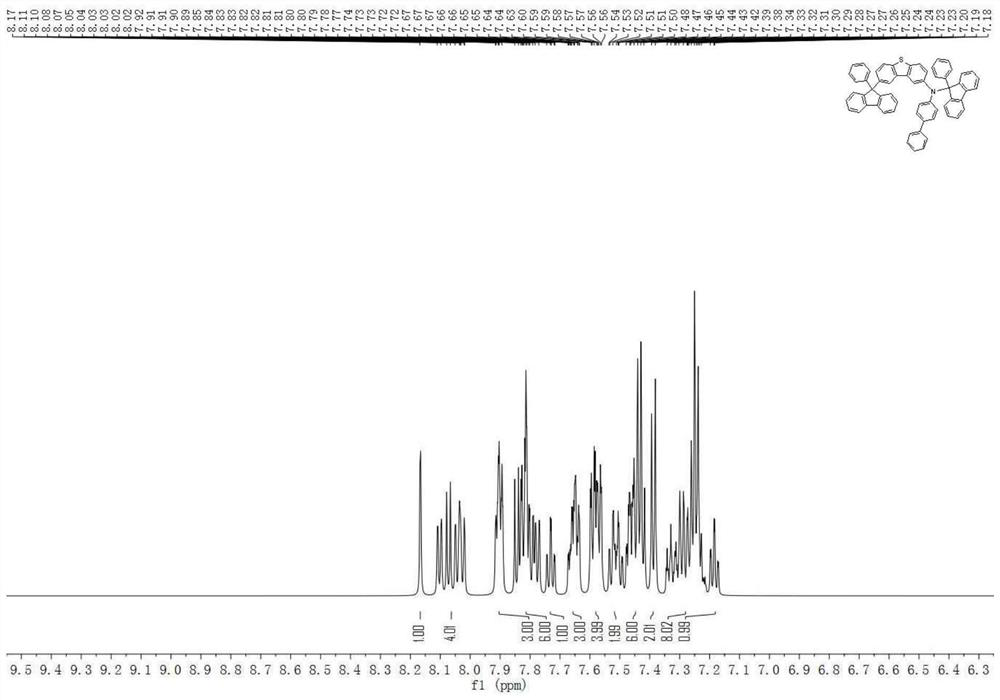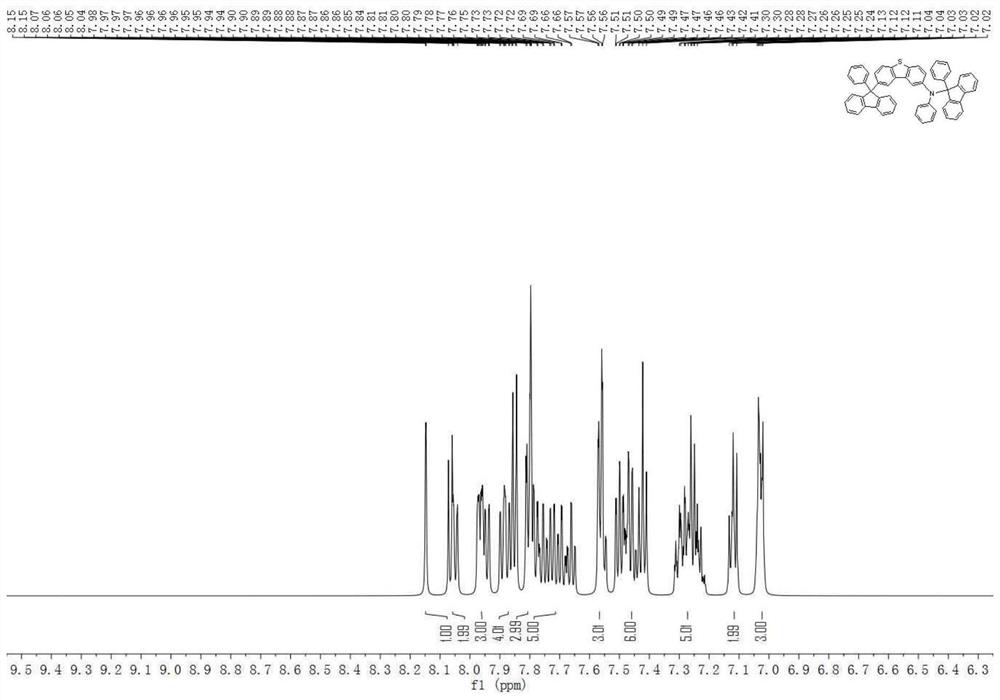Dibenzothiophene derivative and organic light-emitting device thereof
An organic light-emitting device, dibenzothiophene technology, applied in the direction of light-emitting materials, organic chemistry, electric solid devices, etc., can solve the problems of the light-emitting layer cannot be effectively combined, the uniformity of the film is destroyed, and the hole and electron injection is unbalanced. , to achieve the effect of reducing the quenching phenomenon of aggregated state fluorescence, enhancing the electron donating ability, and making the synthesis simple and easy to operate.
- Summary
- Abstract
- Description
- Claims
- Application Information
AI Technical Summary
Problems solved by technology
Method used
Image
Examples
preparation example Construction
[0112] The preparation and formation methods of each layer in the organic light-emitting device are not particularly limited, and vacuum evaporation method, spin coating method, vapor deposition method, blade coating method, laser thermal transfer method, electrospray coating method, slit coating method can be used. Either of the cloth method and the dip coating method, the method of vacuum vapor deposition is preferably used in the present invention.
[0113] The organic light-emitting device of the present invention can be widely used in the fields of panel display, lighting source, flexible OLED, electronic paper, organic solar cell, organic photoreceptor or organic thin film transistor, signboard, signal lamp and the like.
Embodiment 1
[0121] [Example 1] Synthesis of Compound 1
[0122]
[0123] Step1: Synthesis of intermediate A-1
[0124] Under nitrogen protection, toluene (600mL), a-1 (benzidine) (35.54g, 0.21mol), b-1 (67.46g, 0.21mol), palladium acetate (0.61g, 0.0027 mol), sodium tert-butoxide (33.7 g, 0.351 mol) and tri-tert-butylphosphine (10.8 mL of a 1.0 M solution in toluene, 0.0108 mol). And react under the condition of reflux for 2 hours. After the reaction stopped, the mixture was cooled to room temperature, filtered with diatomaceous earth, the filtrate was concentrated, recrystallized with methanol, filtered with suction and rinsed with methanol to obtain a recrystallized solid to obtain intermediate A-1 (67.08g, the yield was about 78 %), HPLC detection solid purity >= 98.4%.
[0125] Step2: Synthesis of intermediate B-1
[0126] Under nitrogen protection, toluene solvent (600ml), c-1 (42.03g, 108mmol), intermediate A-1 (49.14g, 120mmol), Pd 2 (dba) 3 (3.98g, 4.35mol), BINAP (2.02g,...
Embodiment 2
[0132] [Example 2] Synthesis of compound 2
[0133]
[0134] Replace a-1 (benzidine) in Step 1 of Synthesis Example 1 with equimolar a-2, and the other steps were the same to obtain compound 2 (20.90 g, the yield of Step 4 was about 79%), and the solid purity was detected by HPLC > 99.4%.
[0135] Mass Spectrum m / z: 755.29 (Theoretical: 755.26). Theoretical element content (%)C 56 h 37 NS: C, 88.97; H, 4.93; N, 1.85; S, 4.24 Measured element content (%): C, 88.98; H, 4.92; N, 1.84; S, 4.25. 1 H NMR (600MHz, CDCl 3)(δ,ppm):8.15(d,1H),8.09–8.02(m,2H),7.99–7.92(m,3H),7.91–7.83(m,4H),7.80(dt,3H),7.78– 7.64 (m, 5H), 7.56 (td, 3H), 7.51–7.40 (m, 6H), 7.34–7.21 (m, 5H), 7.12 (dd, 2H), 7.04–7.02 (m, 3H). 1 H NMR details are attached figure 2 shown. The above results confirmed that the obtained product was the target product.
PUM
 Login to View More
Login to View More Abstract
Description
Claims
Application Information
 Login to View More
Login to View More - R&D
- Intellectual Property
- Life Sciences
- Materials
- Tech Scout
- Unparalleled Data Quality
- Higher Quality Content
- 60% Fewer Hallucinations
Browse by: Latest US Patents, China's latest patents, Technical Efficacy Thesaurus, Application Domain, Technology Topic, Popular Technical Reports.
© 2025 PatSnap. All rights reserved.Legal|Privacy policy|Modern Slavery Act Transparency Statement|Sitemap|About US| Contact US: help@patsnap.com



